For travelers craving a true taste of Greece’s rugged beauty and traditional charm, a day exploring Zagori’s stone bridges and quaint villages is hard to beat. Priced at $96 per person, this 6-hour tour takes you through some of Greece’s most striking mountain scenery, highlighting the remarkable engineering and enduring artistry of Zagori’s old bridges, as well as the timeless appeal of its villages. Led by an engaging, certified guide, the experience offers both cultural insight and jaw-dropping views—perfect for those who want to combine gentle hiking with authentic immersion.
What we love most about this trip is how it balances spectacular scenery with cultural storytelling. You’ll have the chance to walk over centuries-old stone bridges, each with its own story, and explore villages that look like they haven’t changed in hundreds of years. Plus, the optional stop at the Monument to Zagorian Women offers a meaningful glance into the region’s wartime resilience. The only caveat might be the physical demands; this is a fair bit of walking and some uneven terrain that’s best suited for those in decent shape.
This tour suits outdoor enthusiasts, history buffs, and anyone eager to see a more authentic side of Greece outside the usual tourist spots. If you’re comfortable on foot and love picturesque landscapes, this experience promises both adventure and a deep appreciation for Zagori’s timeless beauty.
Key Points
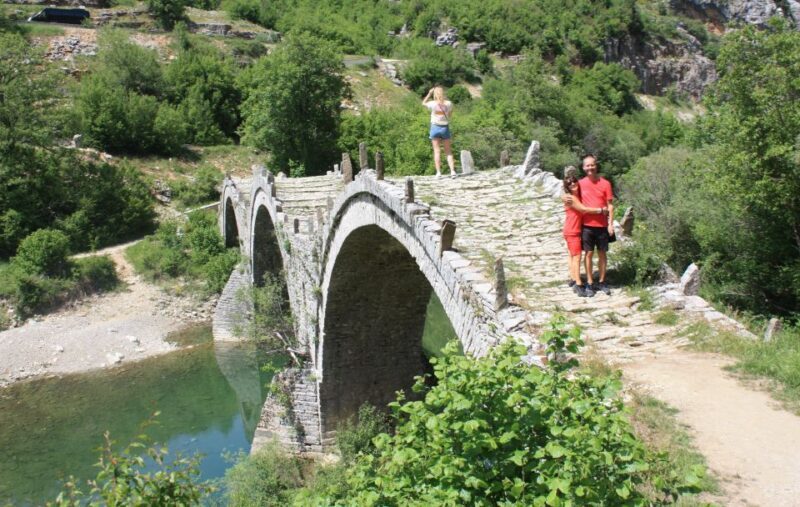
- Stunning stone bridges: Discover Zagori’s impressive collection of well-preserved bridges, each with its own unique history and architectural style.
- Authentic villages: Explore villages like Koukouli, with centuries-old houses, old schools, and charming churches that haven’t been overly commercialized.
- Scenic views and natural beauty: Enjoy breathtaking vistas of the Pindos mountains and the Vikos Gorge, considered one of the deepest in the world.
- Historical insights: Learn about the region’s clever engineering and the stories behind each bridge, including the legendary Kokkoris bridge’s amusing penal history.
- Flexible, guided experience: Led by an English-speaking guide, with options for photo stops, sightseeing, and light hiking—plus some off-road adventures.
- Optional visits: The Monument to Zagorian Women adds a meaningful touch, honoring local women’s wartime contributions.
Starting Point: Kipoi Village and Its Gardens
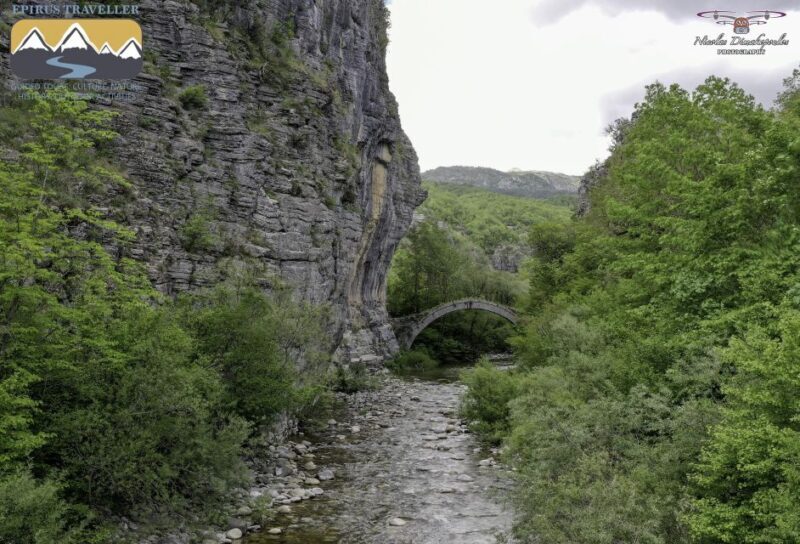
Our journey begins in Kipoi, a hilltop village at 750 meters altitude, famous for its lush gardens. We loved how this peaceful spot sets the tone for the day—quiet, scenic, and packed with traditional charm. As we gathered, our guide, Zaharias, shared some background about the region, making the walk feel personal and engaging. “Kipoi is like a living postcard,” he said, and it’s true; the village’s stone walls and wooden balconies immediately hint at centuries of history.
This initial stop offers a perfect introduction to Zagori’s blend of natural beauty and human craftsmanship. The narrow streets and flower-filled gardens make it easy to see why this area has retained its authenticity, even as tourism has increased.
Plakida (Kalogeriko) Bridge: The Iconic Triple Arched Wonder
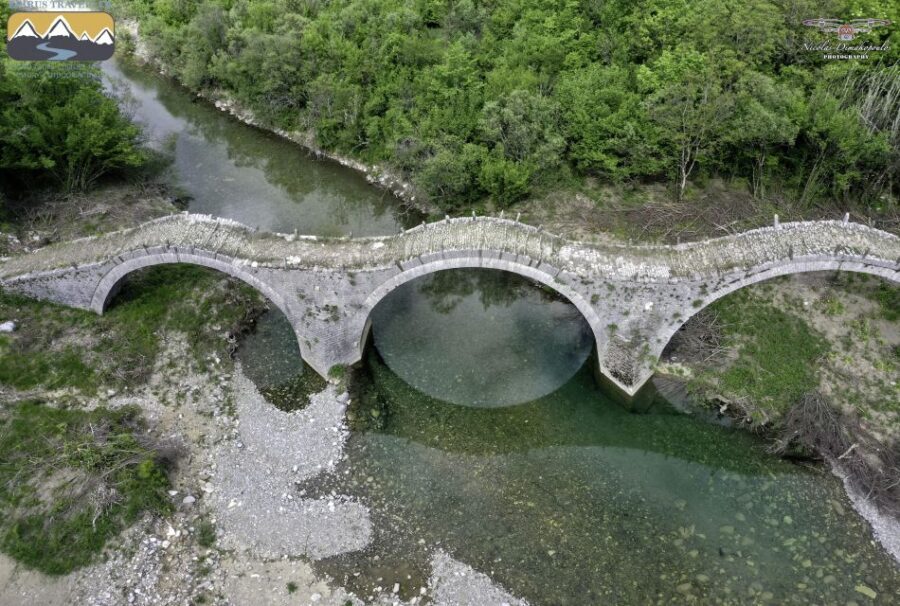
Next, we moved towards the Plakida Bridge, also called Kalogeriko. Built originally as a wooden structure and later reconstructed as a stone bridge by Abbot Serafeim, it’s the most famous in the area. At 54 meters long and 6.7 meters high, this three-arched marvel has a timeless presence.
Walking across, you can imagine the countless travelers and traders who relied on this bridge to connect villages. The guide highlighted its engineering, pointing out how the stones were carefully shaped to fit together without mortar—a technique that has helped it survive numerous floods and earthquakes. The bridge’s accessibility makes it a favorite photo spot, and we appreciated the chance to stand beneath its arches and soak in the views of the surrounding mountains and streams.
Kapetan Arkoudas Bridge: A Historic Shortcut
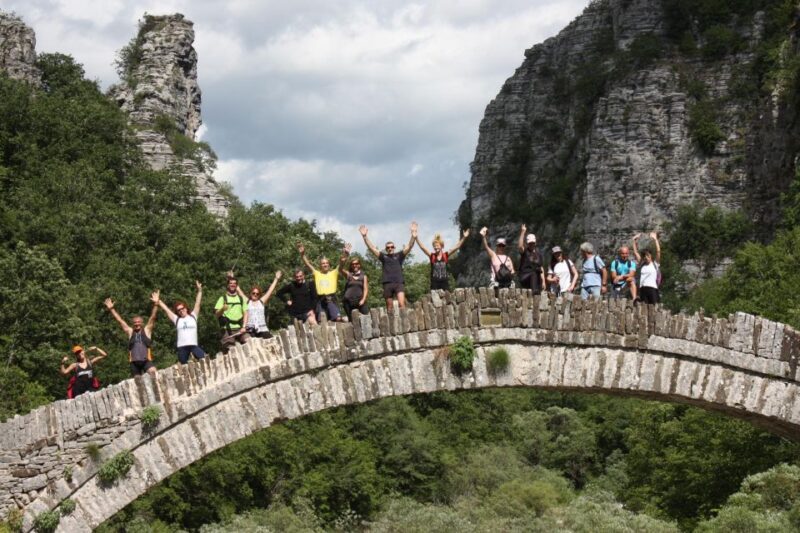
Our route then led us along an easy hiking trail toward Dilofo village. Here, we encountered the Kapetan Arkoudas Bridge, built in 1806. Its name honors a local captain who was killed nearby during Ottoman times, adding a poignant layer to this solid stone structure. It’s a single-arched bridge spanning Xeropotamos stream, connecting villages Kipi, Dilofo, and Vitsa.
The walk to this bridge is gentle, making it accessible for most walkers. Its historical significance and scenic setting along the river make it a peaceful stop. Our guide explained how this bridge was essential for local movement and commerce, and it’s still impressive today.
Kokkoris (Noutsos) Bridge: The Tallest and Most Famous
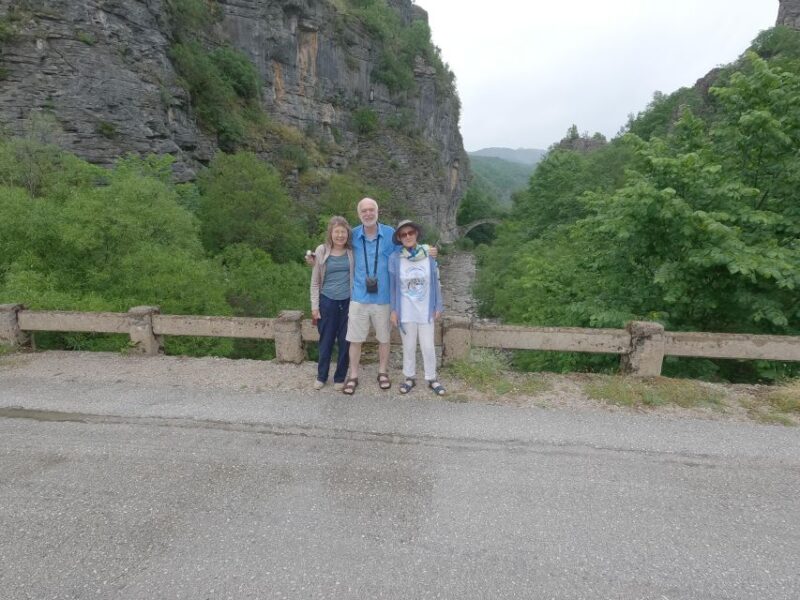
One highlight is the Kokkoris (or Noutsos) Bridge, built in 1750. With a length of 35 meters and a towering height of 13 meters at its highest point, it’s the most visually striking of Zagori’s bridges. We loved the sense of scale as we approached this single-arched masterpiece, which still stands strong after nearly three centuries.
Remarkably, the bridge’s history is colorful. It was used in a rather humorous punishment ritual—if a suspect was to be tested for “zooism,” they were made to carry a goat across it. Fail, and they faced drowning—an odd slice of local justice that adds to the charm of this historical site. The guide shared this story with a grin, making it clear that Zagori’s history is full of such local quirks.
More Great Tours NearbyMisiou Bridge: The Entrance to Vikos Gorge
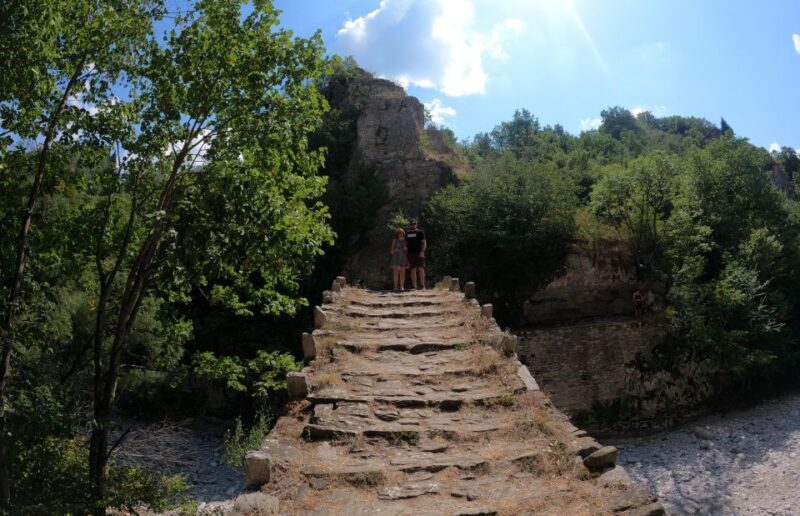
Moving along, we reached the Misiou Bridge, built in 1748. Located at the entrance of the Vikos Gorge, it spans 37 meters and is two arches deep. Its location is perfect for appreciating the gorge’s rugged cliffs and the river rushing below. It’s a popular photo spot, especially as it marks the transition from wooded hills to the awe-inspiring depths of the gorge.
We enjoyed walking beside the riverbanks, listening to the rushing water, and feeling the calm certainty that comes from centuries of sturdy stonework. The views here are truly stunning—pictures don’t do justice to the sense of scale and wild beauty.
Koukouli Village: A Step Back in Time
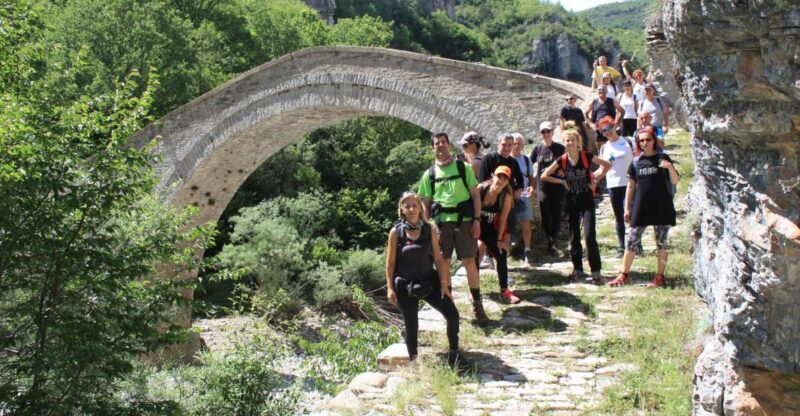
Next, we climbed stone steps into Koukouli, a village dating back to the 13th century. This was a real highlight—quiet, with traditional houses, fountains, and an old school that’s now a museum. The church of Virgin Mary, with its beautiful bell tower, is one of the best-preserved in Zagori.
Time seems to have slowed here. We loved wandering the narrow lanes, peeking into tiny courtyards, and imagining village life centuries ago. The guide pointed out unique architectural features, like the stone arches and carved wooden doors, and explained how these elements reflect local craftsmanship passed down through generations.
Lazaridis Bridge: The Final Connection
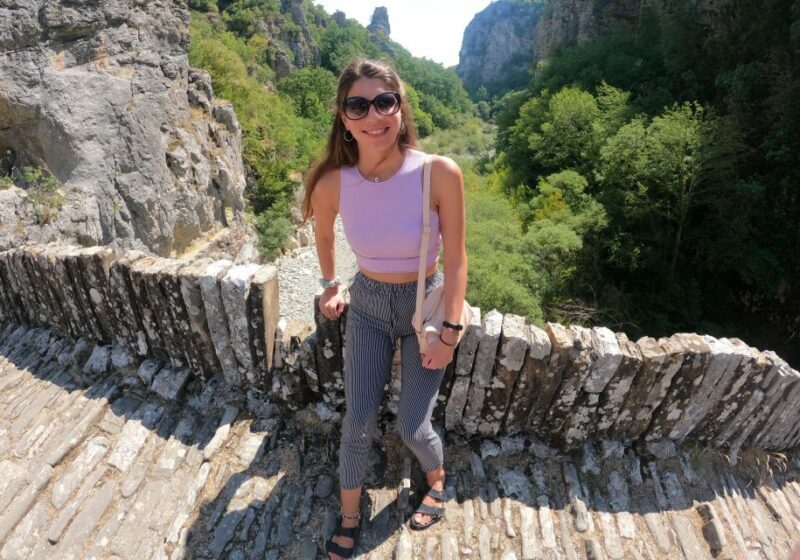
Our last bridge visit was the Lazaridis Bridge, built in 1753. This single-arched stone bridge spans the Kipi stream, linking villages Kapesovo and Koukouli. It’s a perfect spot for observing the cliffs of the Vikos Gorge and taking in the scenery that makes Zagori famous.
The bridge’s proximity to a climbing area for advanced climbers hints at the region’s outdoor adventure potential. We appreciated that this stop carried a sense of ending, as it marks the point where the gorge’s steep cliffs come into view—a fitting finale to a day of walking and discovery.
Optional: The Zagorian Women Monument
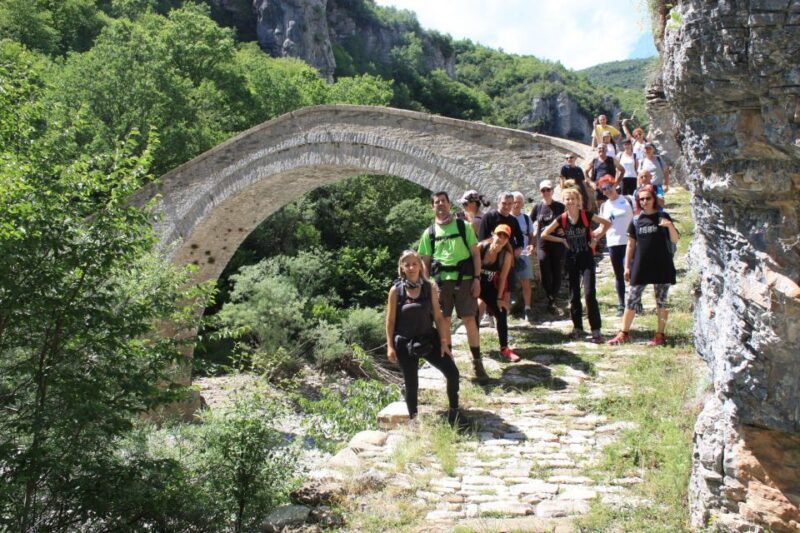
If time permits, the tour concludes with a visit to the Monument to Zagorian Women in Aspraggeloi. This 6-meter-high statue honors local women who contributed during WWII. It’s a quiet, powerful tribute and offers a moment of reflection on the region’s resilience. It’s not a must-see, but it adds depth and meaning if you’re interested in local history.
This experience is especially suited for travelers who enjoy a blend of nature, history, and culture. The walking is moderate but involves uneven terrain and some off-road sections, so good walking shoes and a bit of stamina are recommended. The group size tends to be manageable, giving room for personalized stories from the guide and plenty of photo opportunities.
While the price covers all taxes, a certified guide, bottled water, and some photographic materials, consider bringing a camera, sun protection, and a change of clothes just in case. The optional stops like the monument are a thoughtful addition but don’t make or break the day—what truly shines are the views, the stories, and the craftsmanship of Zagori’s bridges.
In a nutshell, this hike offers a rare glimpse into Zagori’s authentic mountain world—a region where nature and human ingenuity have coexisted for centuries. The bridges embody the region’s practical brilliance, while the villages remind us of a time when life moved at a slower, more deliberate pace.
The tour’s focus on spectacular views, historic bridges, and traditional villages makes it an ideal choice for travelers who love scenic landscapes and stories behind old structures. If you’re seeking an active day that combines outdoor beauty with a touch of Greek history, this outing won’t disappoint.
While it’s not suited for those with mobility challenges or very young children, most physically capable travelers will find it rewarding. It’s a chance to see Greece’s wild side without the crowds, in a landscape that’s both rugged and welcoming.
FAQs
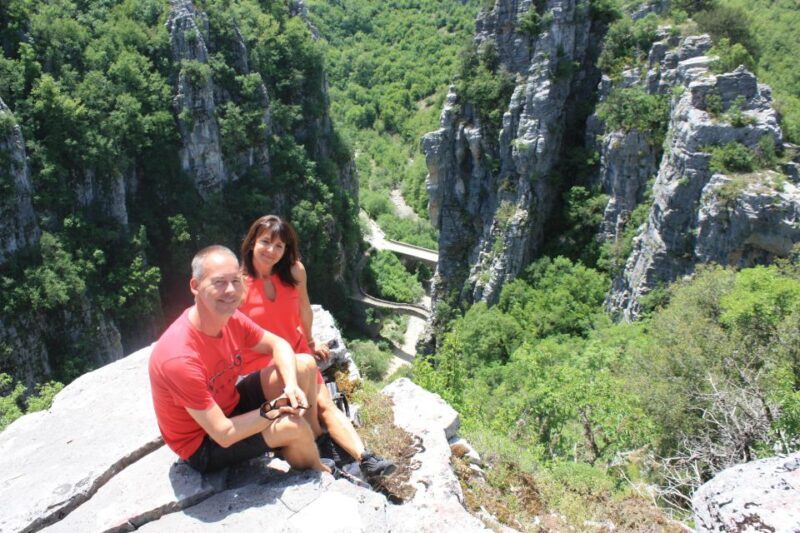
Is this tour suitable for children?
Children under 8 years old might find the walking and uneven terrain challenging. It’s best suited for older kids who can handle light hiking.
Do I need special hiking gear?
Comfortable hiking shoes are recommended, along with sun protection like sunglasses and a hat. A change of clothes can be helpful, especially if you get sweaty or wet.
How physically demanding is the tour?
While the route is generally manageable, some sections involve uneven paths and short off-road segments. Good fitness levels will make the experience more enjoyable.
Are meals included?
No, meals and drinks are not included. You might want to bring snacks or plan a lunch break in one of the villages.
Is transportation provided?
Transport from Ioannina city is not included, so you’ll need to arrange your own way to the starting point in Kipoi.
Can I cancel if my plans change?
Yes, you can cancel up to 24 hours in advance for a full refund, offering some flexibility for your trip planning.
To sum it up, this hike through Zagori’s stone bridges and villages offers a mix of natural beauty, historical intrigue, and authentic village life. It’s an ideal choice for those looking for a memorable day outside the crowds, with plenty of opportunities for photos, stories, and simply soaking in the stunning mountain landscapes. Whether you’re a history buff, a lover of scenic walks, or someone eager to experience Greece’s less-traveled side, this tour will leave you with impressive memories—and maybe a new appreciation for Greece’s engineering and rural heritage.
You can check availability for your dates here: